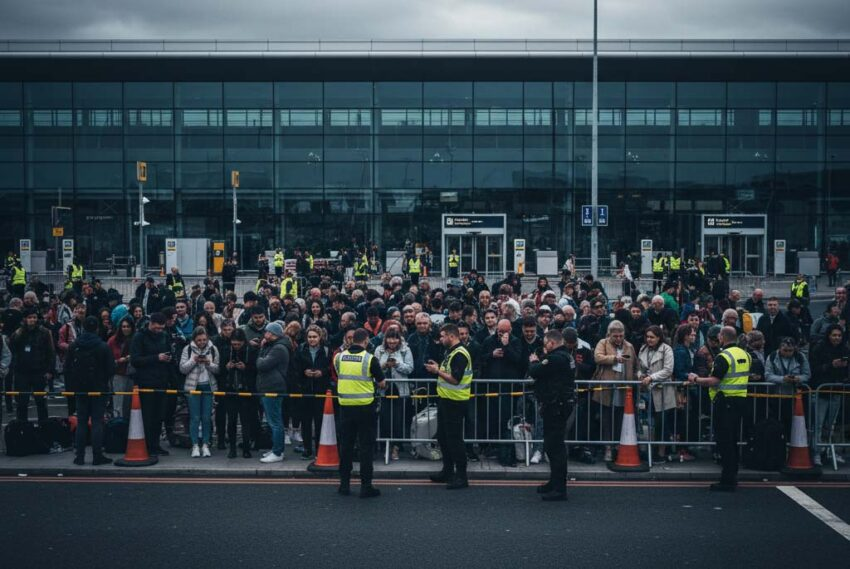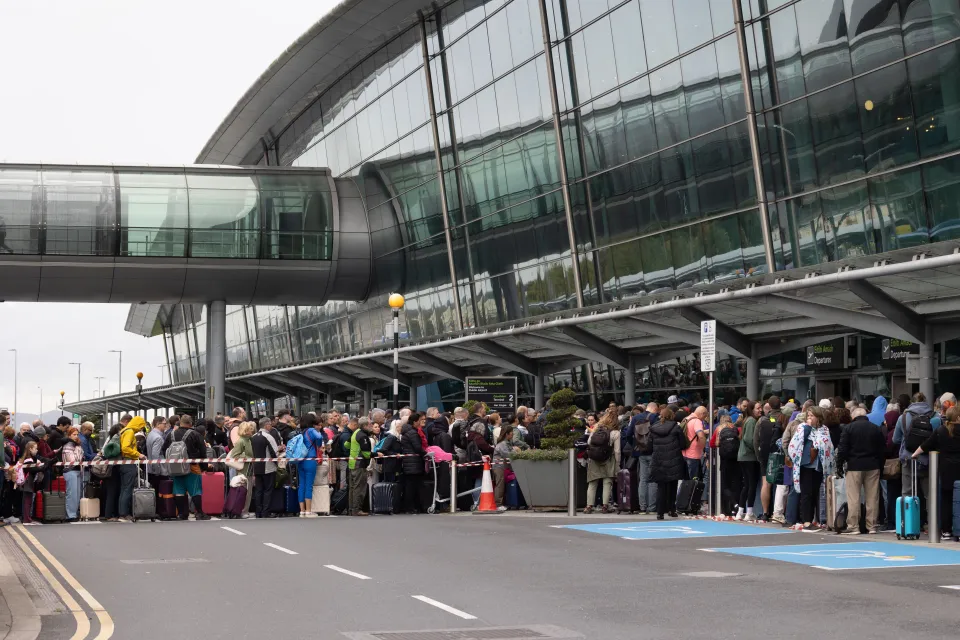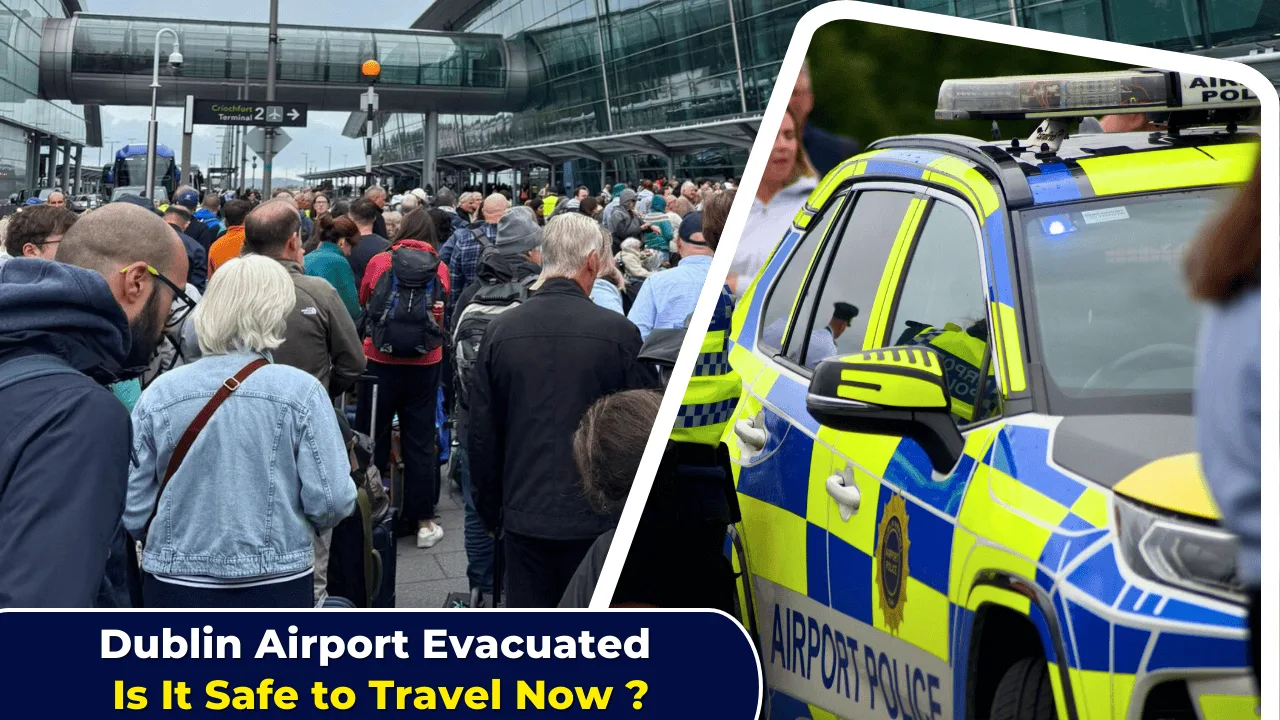Chaos erupted at Dublin Airport’s Terminal 2 as a security alert prompted a full-scale Dublin Airport evacuation, clearing thousands of passengers. The incident, triggered by a suspicious piece of luggage, caused widespread disruption, raising a critical question for travelers: is it safe to travel now?
While the item was quickly deemed non-threatening by Ireland’s Army Bomb Disposal Unit, the scare highlights the intense security measures in place to protect air travel. This post dives into the details of the incident, the protocols that were activated, and what this means for your next flight.
The Incident: A Precautionary Dublin Airport Evacuation
On Saturday afternoon, a routine security screening at Dublin Airport’s Terminal 2 detected an item of concern in a piece of luggage. According to An Garda Síochána, Ireland’s national police service, the alert was taken with the utmost seriousness, leading to an immediate and “precautionary” evacuation of the entire terminal.

This decision, though disruptive, underscores a key principle of modern airport security: any potential threat, no matter how small or unlikely, must be treated as real until proven otherwise. Thousands of passengers were directed to designated assembly points outside the terminal, creating scenes of confusion and long queues. Eyewitnesses described the situation as “chaotic but calm,” with airport staff and Gardaí working to manage the flow of people and maintain order.
The swift response was crucial. The Army’s Explosive Ordnance Disposal (EOD) team was dispatched to the scene. After a thorough examination, the suspicious luggage was removed and confirmed to be safe.
The all-clear was given, and passengers were allowed to re-enter the terminal, though delays persisted for some time as operations returned to normal. Dublin Airport Authority (DAA) later issued a statement thanking passengers for their patience, emphasizing that passenger safety and security were their “absolute priority.”
Understanding Airport Security Protocols
The Dublin Airport evacuation wasn’t a random event; it was the result of a highly specific set of security protocols designed to handle such incidents. When a suspicious item is detected, airports activate a multi-layered response plan.

- Detection and Initial Assessment: The process begins with security scanners (X-ray, CT) and trained security personnel who identify potential threats. Anomaly detection software plays a key role, flagging items that don’t fit a normal profile.
- Isolation and Evacuation: The area around the suspicious item is immediately cordoned off. In cases like the Dublin Airport scare, a full terminal evacuation is ordered to ensure the safety of everyone in the vicinity. This is a critical step to prevent a potential disaster and give expert teams a safe perimeter to work in.
- Expert Intervention: The local police and a specialist team, such as a bomb disposal unit, are called in. Their role is to safely assess, contain, and dispose of the item. They use advanced tools and techniques to examine the object without direct human contact, minimizing risk.
- All-Clear and Re-normalization: Once the item is deemed safe, the alert is stood down. The area is then de-briefed, and normal airport operations slowly resume. The focus shifts to minimizing the impact on passengers and airlines.
This system, while disruptive, is designed for maximum safety. The inconvenience of an evacuation is a small price to pay for the assurance that every potential threat is meticulously investigated.
Is It Safe to Travel After a Security Alert?
The short answer is yes, it is absolutely safe to travel. In fact, a security incident that proves to be a false alarm is a powerful indicator that the airport’s security systems are working exactly as they should.

Think of it this way: the system is designed to be overly cautious. A suspicious shape on a scanner, an unattended bag, or even an item with an unusual density can trigger a full response. While the vast majority of these incidents are benign, the rigorous investigation of each one is what maintains the integrity of the security network.
Also Read: Leeds Bradford Airport: Flying High from Yorkshire
Consider this statistic: according to a 2024 report by the European Union Aviation Safety Agency (EASA), approximately 98% of security alerts at major European airports are classified as non-threatening after investigation. This high rate of false alarms, while inconvenient, demonstrates a robust and vigilant system. It’s a testament to the “better safe than sorry” approach that governs airport security worldwide.
Maintaining Peace of Mind: A Traveler’s Guide
For those who may feel uneasy about flying after a security scare, here are some practical tips to enhance your peace of mind and minimize disruption:
- Check Your Flight Status: Always check your flight status with your airline or on the Dublin Airport website before you leave for the airport. This is the best way to get real-time information on delays or cancellations.
- Arrive Early: In the aftermath of a major incident, security and check-in processes can take longer than usual. Giving yourself extra time is the best way to avoid stress.
- Pack Smart: Be aware of what you are carrying. Prohibited items, even those that seem harmless, can cause delays. A simple forgotten item like a multitool or a bottle of liquid over the limit can lead to a bag check and slow down the entire line.
- Stay Informed: Follow official airport and airline social media accounts for updates. Trusting reliable sources of information like the airport’s official website or the national police service is key.
The recent Dublin Airport evacuation serves as a powerful reminder of the unseen, yet highly effective, security measures in place to protect passengers. While an inconvenience, the event was a success story for airport security—a system designed to find a needle in a haystack and, in this case, confirm it was just a piece of straw.
The swift, decisive action by airport staff and security services demonstrates that air travel remains one of the safest modes of transportation.
The next time you see a security alert at an airport, rather than feeling alarmed, you can feel confident. It means the system is working, vigilant, and dedicated to your safety. So, book your next flight with confidence, knowing that your safety is the absolute priority.

















